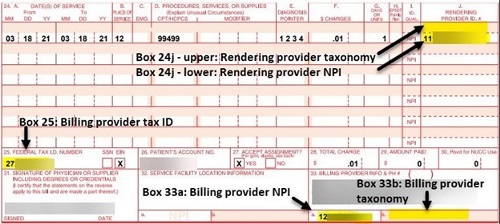HPSM will require all incoming professional services submitted on professional claims forms to include taxonomy codes starting on January 1, 2026. After a brief grace period, any professional claims submitted without taxonomy codes after April 1, 2026 will be denied. This change will directly impact both contracted network providers and out-of-network providers.
A potential bonus is that it may increase your reimbursement, as certain taxonomies entitle providers to higher rates. HPSM appreciates your support in complying with this requirement, as it will help increase reporting accuracy and ensure further payment accuracy.
About taxonomy codes
- A taxonomy code is a 10-character alphanumeric code that identifies a healthcare provider’s specialty and type when submitting claims. (Example: 207RS0012X = Internal Medicine – Sleep Medicine.)
- You can find your own taxonomy code by using this code set to look up your specialty’s associated taxonomy.
- Put your taxonomy code on the claim form CMS 1500 for both billing and rendering providers. Often the taxonomy code will be the same for both.
- The key differences between billing and rendering taxonomy codes are:
- The billing taxonomy code identifies the specialty of the entity/organization.
- The rendering taxonomy code identifies the specialty for the individual who performed the service.
Claim filing instructions
Electronic claims (837 EDI file format)
- Billing taxonomy codes are typically included in EDI loop 2000A for professional claims (ASC X12 837-P).
- Rendering taxonomy codes are included in EDI loop 2310B for professional claims (ASC X12 837-P).

Paper claims
If you have questions about this change, please contact HPSM’s Claims Department by email or calling 650-616-2106
